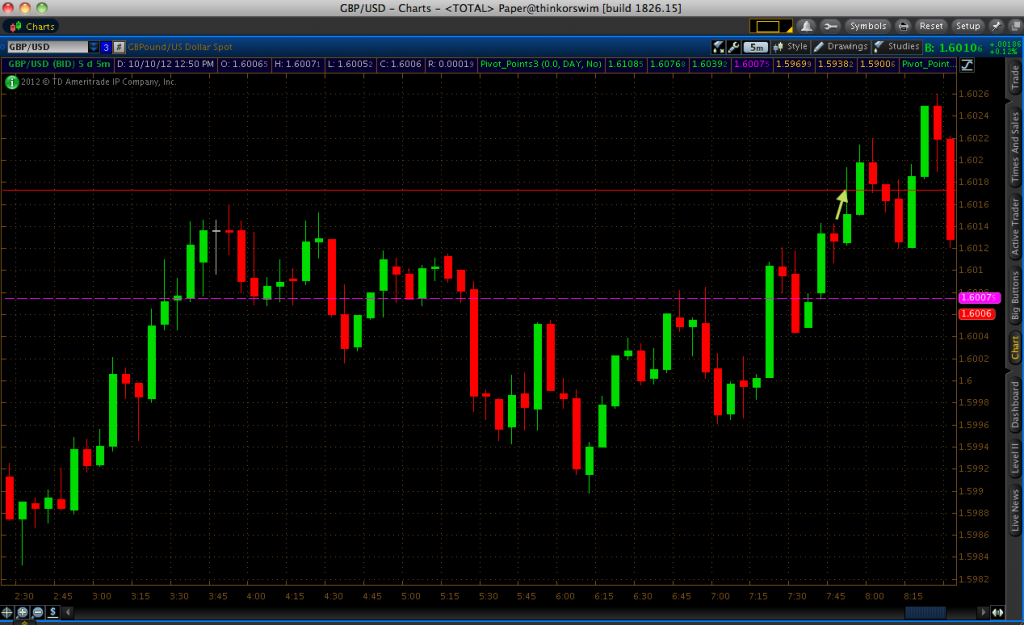Using a hedging strategy when trading binary options
October 12, 2012

An important facet in trading is to keep an open, flexible mind about the market. That is, trade what you think the market will do rather than what you want it to do. This is especially hard for those who state or publish their outright opinions on how they envision the direction the market will go. And it’s especially important for those who trade longer-term instruments, in that the refusal to be wrong on a position will likely just lead to the situation become vastly worse. It essentially represents emotional attachment to the market, which is never a positive thing.
How is any of this relevant to trading short-term binaries? Well, occasionally in binary options there comes a point where a call option set-up can transform into a potential put option (or vice versa) without much of a time gap in between.
I encountered a trade scenario on Wednesday that embodied this type of situation:

On the 7:50AM (EST) candle, I was looking to take a put option on the GBP/USD at 1.6016. As we can see, this represented a resistance level with price reaching up to that level earlier in the morning during the first hour of the European session at 3:50AM EST. However, nearly immediately after I took this trade I realized that it would have a low likelihood of working out, as the 1.6016 resistance had been breached. Overall, the trend was up and above the pivot point, which is often taken to be a bullish signal. Moreover, the 1.6000 level had been surpassed earlier in the morning and now with a recent resistance level broken, it suggested to me that it would be most likely to continue its journey upward.
Instead of watching the chart tick for tick and hoping that my put option would come back in my favor (it did briefly), I decided that I was probably going to be wrong and immediately took the opposite side of the market in what’s commonly called a “breakout” trade. I took a call option at the point of the arrow specified on the chart above.
Now I had two trades open, but was far more confident in the second trade I had taken. With five minutes to go before expiration, I was actually winning on my first trade and losing on the second. When looking at the chart at the conclusion of the 7:50 candle, it could give the illusion that there was a “false break” in the market and the pinbar that had formed would most likely mean that the first trade was correct and the GBP/USD would head south. However, false breaks can work both ways. If this was currently a downtrending market, or if the GBP had some fundamental reason to be weak (or the USD had some fundamental reason to be strong), or if there was more resistance just above the 1.6016 level, then I might agree that the false break was probably valid as such and would continue down. But as I stated earlier, this pair had shown a lot of momentum earlier in the morning to breach 1.6000, which is one of the most well-known price levels in all of forex trading. Therefore, movement in the next five minutes was most likely to give me a winner on the call option, which it did, closing out about 2.5 pips in favor.
This is an example of a hedging strategy in binary options trading, although, in general, this is probably going to be something that you use sparingly. You should be relatively well convinced that your initial trade will likely be incorrect before taking the other side of the market in quick succession. While it’s something that is ideally suited to minimizing a loss, if the gap between the ITM zones is large between the entries of both trades (3 pips in my case) then it can give you two OTM trades, which spoils the premise behind entering the second trade to begin with.
While this bullish bias to the GBP/USD was less pronounced during pre-market New York hours, it continued throughout the remainder of the week, as it nears 1.6100 just before the forex markets close for the week.
Have a great weekend!